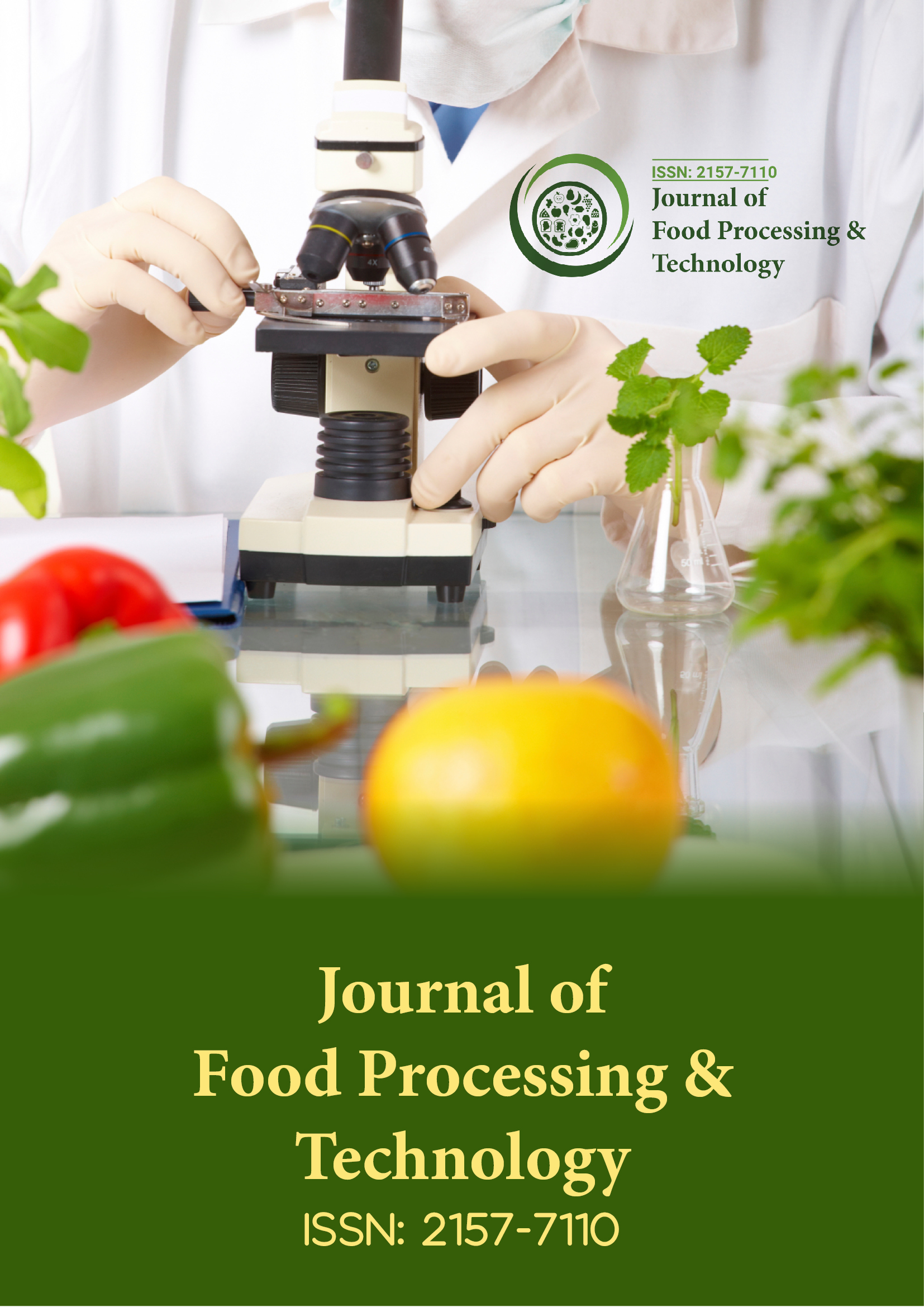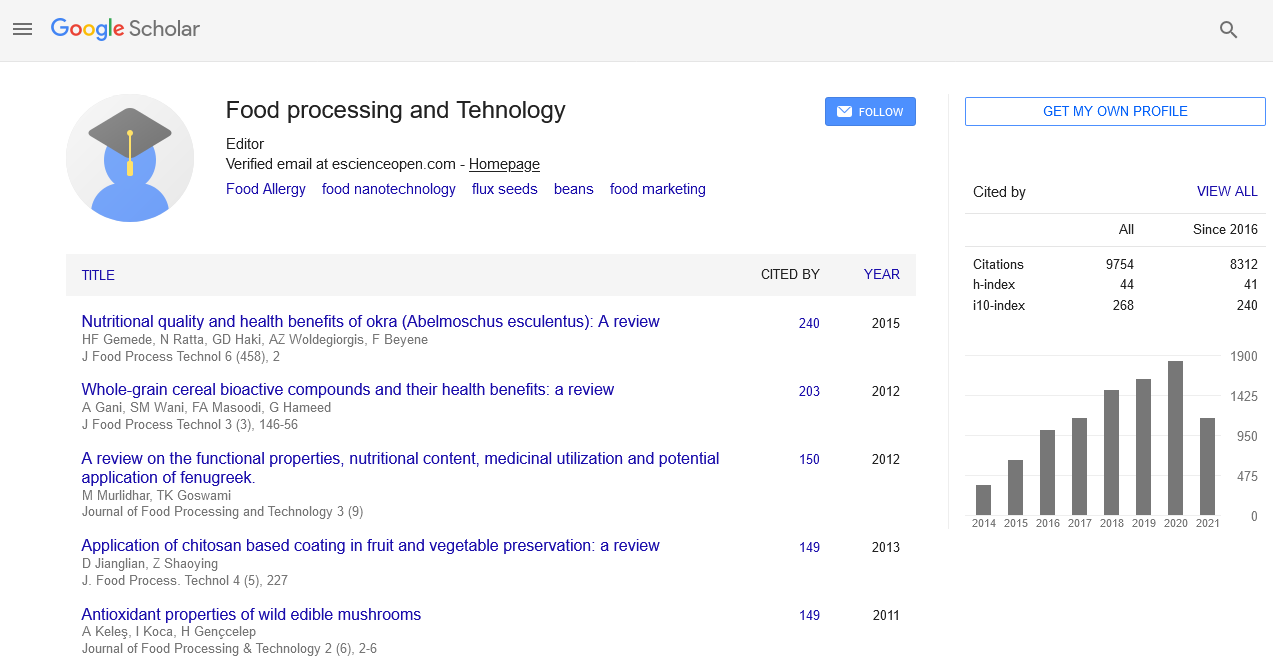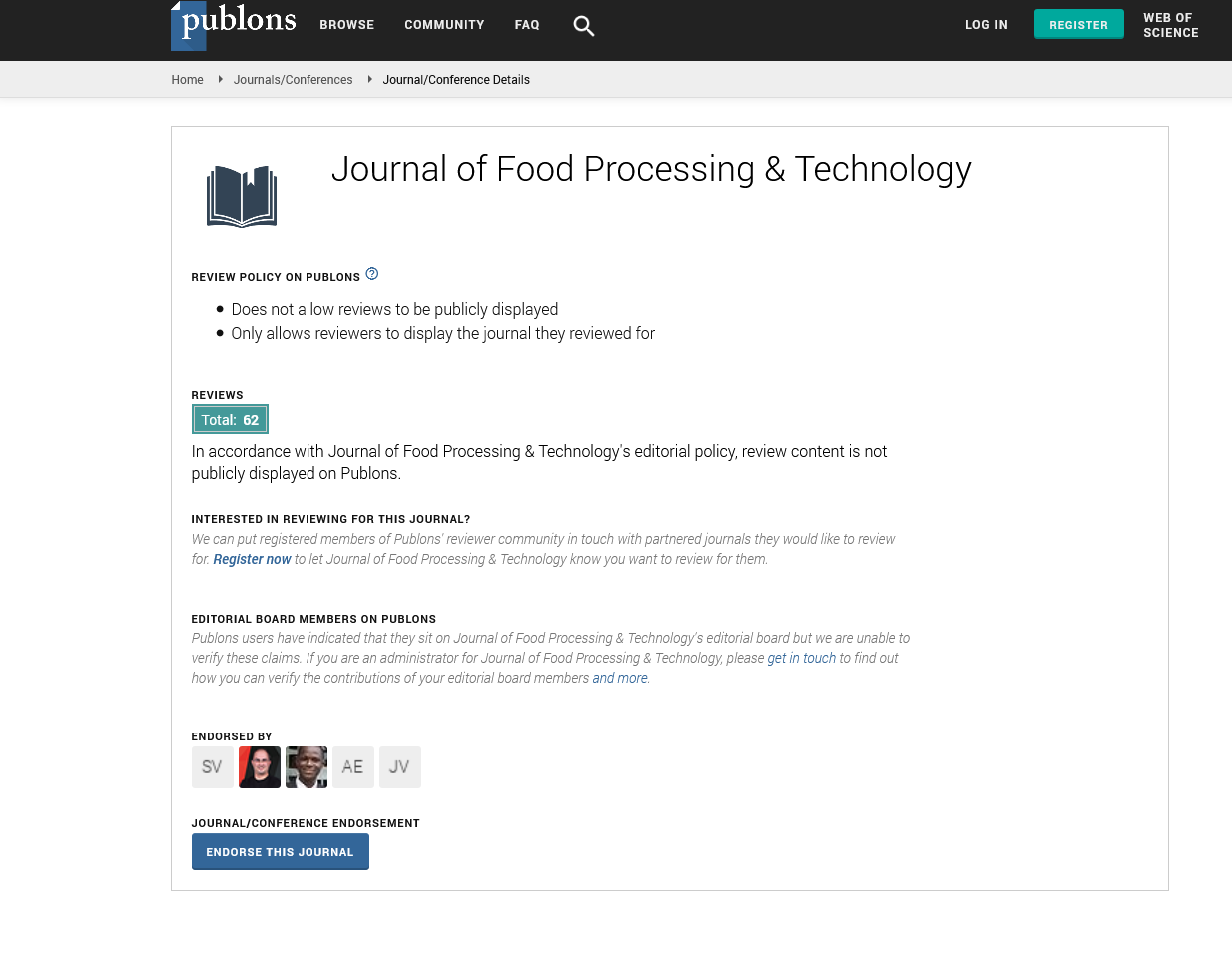Indexed In
- Genamics JournalSeek
- Academic Keys
- JournalTOCs
- China National Knowledge Infrastructure (CNKI)
- Access to Global Online Research in Agriculture (AGORA)
- Centre for Agriculture and Biosciences International (CABI)
- RefSeek
- Directory of Research Journal Indexing (DRJI)
- Hamdard University
- EBSCO A-Z
- OCLC- WorldCat
- Scholarsteer
- SWB online catalog
- Publons
- Euro Pub
- Google Scholar
Useful Links
Share This Page
Journal Flyer

Open Access Journals
- Agri and Aquaculture
- Biochemistry
- Bioinformatics & Systems Biology
- Business & Management
- Chemistry
- Clinical Sciences
- Engineering
- Food & Nutrition
- General Science
- Genetics & Molecular Biology
- Immunology & Microbiology
- Medical Sciences
- Neuroscience & Psychology
- Nursing & Health Care
- Pharmaceutical Sciences
The Silent Threat: Antimicrobial-Resistant Pathogens in Food-Producing Animals and Their Impact on Public Health: Review
6th International Conference on Food Technology and Nutrition
March 21-22, 2024 | Paris, France
Ayidh M. Almansour
Saudi Food and Drug Authority (SFDA), Saudi Arabia
Scientific Tracks Abstracts: J Food Process Technol
Abstract:
The emergence of antimicrobial resistance (AMR) is a global health problem that poses a significant threat to the effectiveness of antibiotics. This issue transcends geographic boundaries, and failure to implement preventive measures could undermine containment efforts worldwide. The rise in antimicrobial-resistant pathogens complicates infection treatment, raises healthcare costs, and increases mortality rates. AMR can originate from food-producing animals frequently treated with antimicrobial drugs to prevent and treat infections. The overuse and misuse of these drugs in animal agriculture contribute to AMR bacteria development, which can be transmitted to humans through contaminated food or direct contact. A One Health approach involving integrated measures is essential to address AMR, maintain antibiotic efficacy, and safeguard food safety. Countries have introduced regulations to limit antimicrobial drug use in animal agriculture and promote responsible usage. This review provides an updated and comprehensive overview of critical AMR pathogens in food-producing animals and discusses the consequences for animal and human health, along with strategies to mitigate this threat.
Biography :
Ayidh M. Almansour is a specialist in molecular biology at the Saudi Food and Drug Authority (SFDA) in Riyadh, Saudi Arabia. He, along with co-authors Meshari A. Al Hadlaq, Khaloud O. Alzahrani, Lenah M. Mukhtar, and Suliman M. Alajel, has worked extensively on the issue of antimicrobial resistance within food-producing animals. Their research aims to bridge the gap between animal health and public health by emphasizing the importance of a One Health approach to combating AMR. Their collective efforts contribute to a comprehensive understanding of AMR pathogens and the associated risks to both animal and human populations.


